Isolated Leg and Glute Exercises
Do you know those huge muscle groups in your leg and glute exercises ? They’re seriously powerful– and super important for just about everything you do!
Think walking around, climbing stairs, or even just sitting down– plus all kinds of sports.
It’s true that big moves like squats and lunges (we call them compound exercises) are great for building overall strength. But sometimes you want to focus more specifically on certain muscles, right?
Located in the rear, the gluteal muscles– more colloquially called your ‘glutes’– rank as some of the strongest muscle groups anywhere in your physique.
This impressive power is indispensable for athletic pursuits— yet its usefulness extends into daily life tasks that need lots of hip action, good balance, upright posture, and even more elements leg and glute exercises .
So what exactly are these vital muscles up to back there? Let’s delve in for a closer inspection.
🍑 The Three Glute Muscles
1) Gluteus Maximus
The largest and most visually dominant glute muscle, it’s largely responsible for the familiar rounded shape of your posterior.
Its functions include facilitating powerful hip extension motions such as rising to stand or climbing stairs and rotating the thigh outward.
2) Gluteus Medius
Situated a bit higher and more to the side along your pelvis, this muscle plays a different role.
It enables movements like raising your leg sideways and crucially keeps your hip stable when moving— walk or run.
3) Gluteus Minimus
This one lies beneath the medius– hence being both smaller and deeper.
Here we find assistance provided in two primary jobs:
stabilizing the hip joint (to keep things steady) and abducting the leg (that is moving it out sidewards) .
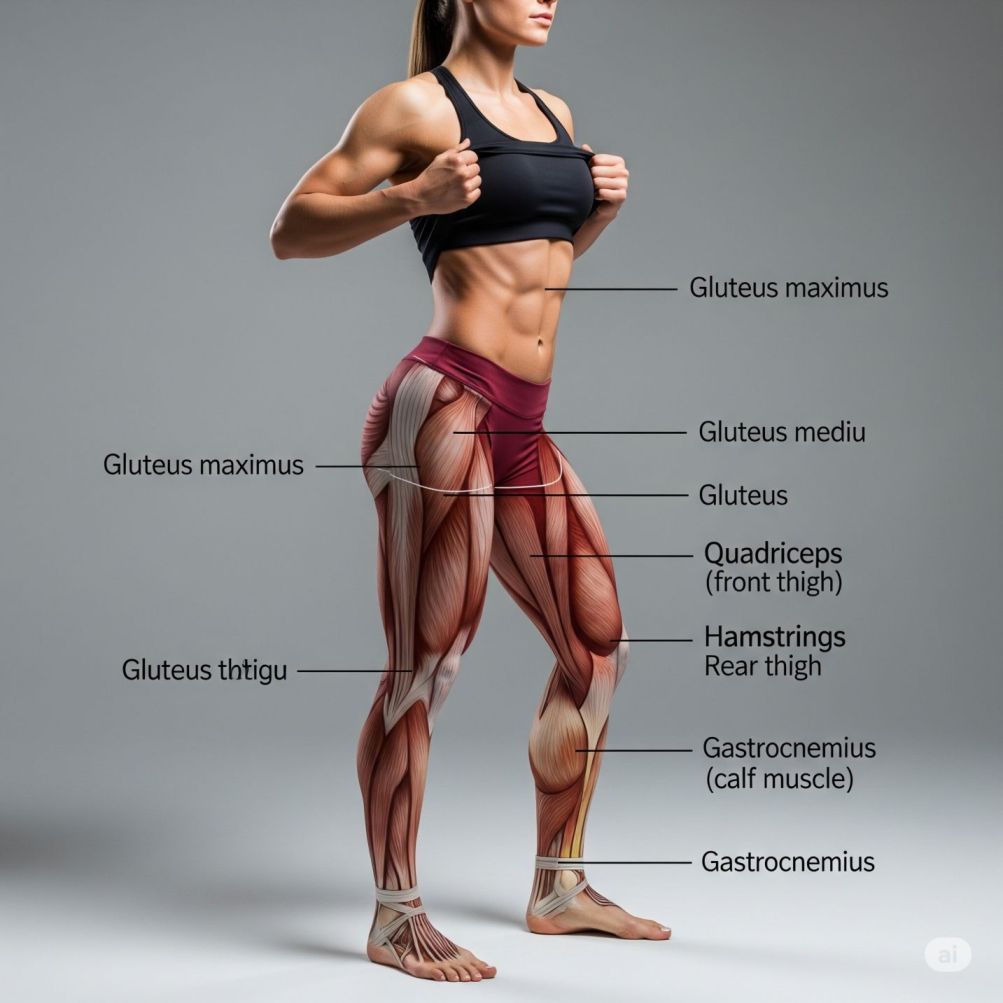
Why Focus on Legs and Glutes?
The legs and glutes are super important for how you look and how well you move. Here’s the deal:
- Getting Around Better Having strong legs and glutes makes it easier to get from point A to B without hassle and lessens the chance you’ll get hurt doing stuff.
- Standing Tall The glutes and hamstrings help hold up your lower back, making sure your spine stays nice and straight
- Sports Performance Having powerful legs and glutes means you can run faster, change direction more quickly, and have more explosive strength– basically all the things athletes need!
- Appearance Let’s be honest: well-shaped legs and glutes look great! They make your body appear balanced and toned.
- Burning Calories Every time you activate these massive muscle groups (which I’m pretty sure you do all the time), they require a lot of energy– so hello there fat loss!
- Targeted Workouts If you want to ensure even development or spot-fix any imbalances, there are exercises that focus on different areas within each muscle group .
Benefits of Isolated Exercises
Isolated leg and glute exercises focus on a single muscle group, offering unique advantages over compound movements:
1) Target Specific Growth
When you isolate muscles– say the glutes or quadriceps– you encourage growth in those specific areas.
2) Better Muscle Engagement
Doing isolated moves improves that mind-muscle connection; it makes sure you’re really using the correct muscles.
3) Fix Strength Differences
If one leg or glute is lagging behind, isolated exercises are great for bringing them up to par.
4) Less Stress on Joints
Unlike heavy-duty compound lifts, isolated moves tend to be kinder to your joints; perfect if you’re exercising at home.
5) Great for Home Workouts
These exercises don’t need much kit, making them just right for leg and glute workouts you can do at home.
6) Build a Stronger Lower Body
And there’s more good news! Adding in some isolated leg and glute work means you’ll build strength gain better stability and shape a superbly balanced lower body.
Equipment Needed for Home Workouts
It’s great that most of these leg and glute exercises don’t need much equipment– or any at all.
However, here are a few things that might be useful:
1) A chair or step
This can help with moves like slow step downs and seated leg extensions.
2) A resistance band
Some people use this for extra challenge during glute kickbacks and standing hip abductions– but it’s up to you!
3) A small ball or pillow
Good for holding between your knees when doing inner thigh presses.
4) A yoga mat
Nice to have for floor exercises such as single-leg glute bridges (but not essential).
5) Light weights
Maybe useful if you want added resistance for moves like single-leg good mornings (water bottles or tins will do the job).
But don’t worry if you don’t have any of these things: you can still do plenty of effective workouts using just your bodyweight.
7 Isolated Leg and Glute Exercises
Below is a detailed guide to seven isolated exercises for your leg and glute exercises , including step-by-step instructions, targeted muscles, benefits, and tips for proper form.
1) Slow Step Down:
Target Muscles: Quadriceps, glutes, and hamstrings
Equipment Needed: Sturdy chair, step, or maybe a low platform
Difficulty Level: Intermediate
How to Perform It:
- Begin by standing on your chosen chair or step, feet hip-width apart for stability.
- Engage your core; maintain an upright chest and keep those shoulders relaxed.
- Now here’s the key part: slowly lower one foot toward the ground, bending that supporting knee in a very controlled way (think about taking 3-4 seconds to lower).
- Just lightly tap the floor with your heel. Then push through the heel of the supporting leg to get back up to where you started.
- Complete 10–14 reps on one leg before you switch sides.
What’s in it for you?
Strengthens those quads and glutes, which is great for knee stability.
Improves your balance plus builds that important unilateral leg strength.
A nice low-impact move suitable for nearly all fitness levels.
Good tips:
- Ensure your supporting knee tracks over your toes; this helps avoid strain.
- If you’re just starting out, maybe hold onto a wall or chair for balance.
- Really focus on that slow, controlled descent to maximize work in your legs and glutes.
Things to avoid:
- Letting the knee cave inward.
- Rushing through the movement; it reduces how much muscle you activate.
2. Glute Kickback:
Kickstart your fitness journey with this Incredible Glute and Hamstring Toner! Perfect for beginners, you can do it anywhere— no equipment necessary! Maybe grab a resistance band if you’re feeling extra leg and glute exercises .
How to Perform
- Love all fours! Get comfy with hands stacked right under your shoulders & knees lined up beneath your hips.
- Pull in that core strength, keeping your spine oh-so-neutral (which means no arching that lower back).
- Now extend one fabulous leg straight back, lifting it high until it’s perfectly in line with your hips; feel that wonderful squeeze in your glutes at the top.
- Gently lower the leg back down but don’t quite let it touch the ground– we like to keep tension.
- Complete 10-14 reps per leg
.
Benefits
- This beauty isolates the glutes for maximum activation and growth (hello, peachy results!).
- It also strengthens those hamstrings and boosts hip mobility– getting you limber for life!
- A low-impact wonder ideal for home workouts (perhaps during Netflix).
Tips
- Keep those hips square and steady to avoid any twisting action.
- Pop a resistance band above your knees; why not add some extra challenge?
- Remember to focus on squeezing your glutes right at the top for better activation (connect with those muscles!).
Common Mistakes
- Avoid arching the lower back; this sneaky move reduces glute engagement.
- Try not to lift the leg too high either; you’ll strain that spine— we want safe moves only!
3. Single Leg Good Morning
Targeting the Hamstrings, Glutes, and Lower Back
Maybe use a light dumbbell or something from around the house— though you won’t necessarily need anything.
Level: Intermediate
How to Do It
- Stand easy with your feet about hip-width apart; you can put your hands either behind your head or maybe on your hips. Shift your weight onto one leg, keeping just a slight bend in that knee.
- Then hinge at the hips, lowering your upper body toward the floor while you send the other leg straight out back.
When should you stop?
- Right when your torso and that extended leg make a straight line.
- Now return to where you started, making sure you really engage those glutes and hamstrings.leg and glute exercises Try for 10 to 14 reps on each leg.
What’s In It for You?
A great way to target those hamstrings and glutes— key for building posterior chain strength.
It also helps improve that crucial balance and core stability we all need.
And don’t forget it enhances flexibility right in the hamstrings too!
Suggestions for Getting It Right
Keep those hips nice and square; it helps avoid any unwanted twisting.
Moving slowly is key here– maintain control and look after your lower back.
For a bit more challenge, try holding a light weight, maybe even a water bottle.
Watch Out for These Slip-Ups
Avoid rounding the back as it might strain your spine.
Do not lock the supporting knee because it reduces stability.
4. Standing Hip Abduction
Glute Strengthener
Target Areas: Glutes, Outer Thighs (gluteus medius)
Getting Started: None needed, but a resistance band is optional
Level: Beginner
How to Do It:
- Stand tall with feet together; you can hold a wall or chair for balance if necessary.
- Engage your core muscles and lift one leg straight out to the side— aim for maximum height without leaning your torso over.
- Slowly lower the leg back toward the starting position— don’t let it rest on the ground between reps.
- Complete 10-14 repetitions on each leg.
The Benefits:
This move will help you strengthen your gluteus medius— an important muscle when it comes to stabilizing your hips.
You’ll also tone up those outer thighs; plus improve balance so everyday tasks (like walking upstairs) feel less tricky. There’s another bonus too: performing side leg lifts could reduce injury risks related to knees and hips— as suggested by some experts!
Top Tips:
- Point those toes forward! This little adjustment ensures you hit the glutes effectively.
- For an extra challenge, slide a resistance band around your thighs.
- Remember, no leaning allowed; keep that torso perfectly upright.
Watch Out For:
- Leaning your torso— this sneaky move reduces glute activation.
- Turning toes outward? That shifts the focus away from your glutes.
5. Seated Leg Extension
Target Muscle: Quadriceps
Equipment You Need:Chair (maybe ankle weights or a resistance band too)
How Hard Is It? Beginner level
Steps to Do It
- Take a seat, back nice and straight. Feet flat down, and hands on the sides– this is your stability spot.
- Engage your core. Extend one leg out– remember to squeeze those quadriceps up top (like giving them a high five).
- Hold for a beat (1-2 seconds). Then let it down nice and slow back. Repeat for 10-14 reps on each leg.
Benefits You’ll Feel
- Zeroes in on the quads, making legs stronger and more powerful.
- Boosts knee strength– helps keep them stable too.
- Gentle on the joints; perfect if you’re just starting out.
Tips for Success
- Keep that upper body chill; this really helps focus on the quads.
- Want more? Try adding ankle weights or using a resistance band.
- Move slow and steady– this cranks up the muscle tension.
Things to Avoid
- Don’t lean back! It makes the quads do less work (and they love the action).
- No need to rush here; speed cuts down how effective it is (we want max results).
6. Inner Thigh Press
- Simple Squeeze Exercise
- Who would’ve thought strengthening your inner thighs could be this straightforward?
- All you need is a small ball or even a pillow sometimes!
Beginner friendly
- Sit in a comfy chair or lie down– knees bent, feet flat. Now place that ball or pillow between your knees. Experts agree squeezing targets those adductor muscles.
- Its low-pressure nature suits individuals across diverse fitness levels seeking to tone the leg area without strain or impact.
- Engage your core and press the ball— at least that’s what my thighs tell me! Hold for three to five seconds, then ease up slightly; don’t let it drop though. Go for 10 to 14 repetitions— you can feel them working out there!
- Plus it helps with pelvic floor stuff (hips!), which is super important. And it’s simple, no matter how fit you are.
Tips from the pros:
- Keep that core engaged (it helps your back!)
- Maybe try a firmer ball if you want more challenge. Focus on controlled squeezes; no rush needed here .
Common pitfalls to avoid:
- Don’t forget to breathe! Holding your breath isn’t good for core engagement. Using something too soft?
- You won’t get enough out of it (resistance is key).
7. Single-Leg Glute Bridge
Target Muscles: Glutes, hamstrings, core
Equipment Needed: None (optional: yoga mat)
How to Do It:
- Begin by lying on your back with knees bent, feet flat on the floor, and arms resting comfortably by your sides.
- Lift one leg, extending it straight up toward the ceiling or keeping the foot just above ground level.
- Focus on core engagement, pressing firmly through the heel of the foot still grounded as you lift your hips; aim for your body to form a straight line from shoulders down to knees.
- At the top, really squeeze those glutes— then lower your hips back down slowly without letting them rest. Aim for 10-14 worthy reps for each leg.
What’s in It for You?
- This move isolates the glutes, helping maximum activation and growth: great if you want stronger hips.
- Your hamstrings and core get stronger too: that means better overall stability.
- It also improves unilateral strength (one side at a time) and hip mobility: handy for lots of other activities.
Helpful Tips:
- Ensure your hips stay level; don’t let them tilt sideways.
- Avoid pushing through the lower back– really concentrate on engaging those glute muscles well.
- Move with purpose— slowly maintain control and maximize muscle tension throughout every rep.
Watch Out For This!
- Letting the hips sag can reduce glute activation: don’t let it happen!
- Using momentum rather than controlled contractions cheats you out of the full benefits from each movement.
Sample Workout Plan with Chart
To help you structure your leg and glute exercises here’s a sample plan incorporating all seven exercises. Perform this circuit 3 times, resting 30-60 seconds between exercises and 1-2 minutes between sets.
Workout Plan
- Warm-Up: 5-10 minutes of dynamic stretches (e.g., leg swings, high knees, butt kicks).
- Circuit (3 sets, 10-14 reps per exercise):
- Slow Step Down
- Glute Kickback
- Single Leg Good Morning
- Standing Hip Abduction
- Seated Leg Extension
- Inner Thigh Press
- Single-Leg Glute Bridge
- Cooldown: 5-10 minutes of static stretches (e.g., hamstring stretch, quad stretch, glute stretch).
Notes:
- Perform exercises unilaterally (one side at a time) where applicable.
- Adjust reps based on your fitness level (e.g., 10 for beginners, 14 for advanced).
- Use bodyweight for beginners; add resistance as you progress.
Tips for Maximizing Your Leg and Glute Exercises
Increase leg and glute exercise benefits using these expert tips:
Warm Up Right:Begin with 5-10 minutes of dynamic stretches to boost blood flow and get your legs and glutes ready for action.
Focus on Form:Doing it right makes sure you hit the target muscles and stay injury-free.
Engage Your Core:A strong core keeps you stable, making exercises work better.
Progress Step by Step:Start using your body weight. Add resistance like bands or weights when you grow stronger.
Rest and Recover:Take 48 hours between tough leg and glute sessions so muscles can repair and grow.
Stay Consistent:Shoot for 2-3 leg and glute workouts weekly to see the best results.
Combine with Cardio:Mix these exercises with cardio activities such as walking or cycling for balanced fitness.
Hydrate, Eat Well:Fuel muscle growth by drinking enough water and consuming sufficient protein.
Common Mistakes to Avoid
Ensure you have safe and efficient leg and glute exercises sessions by avoiding these pitfalls!
Poor Form: Getting your alignment wrong (think knees caving inward) can cause injuries.
Always put technique first.
Rushing Movements: Quick uncontrolled reps mean less muscle work. Concentrate on slow purposeful moves.
Skipping Warm-Ups: Cold muscles really do risk injury. Make sure you warm up before any workout.
Overtraining: Going hard on legs and glutes all the time without breaks leads to tiredness and getting hurt.
Neglecting Core Engagement: Forgetting your core can make you wobbly and lessen the benefit of exercises.
Ignoring Pain: Feeling uncomfortable is part of it, but sharp pain means something’s wrong. Stop & check your form!
FAQs About Leg and Glute Exercises at Home
1. Can I build strong legs and glutes without equipment?
Yes! Bodyweight exercises like Glute Kickbacks and Single-Leg Glute Bridges effectively target your legs and glute exercises . Adding resistance bands or household items can increase intensity as you progress.
2. How often should I train my legs and glutes with exercises?
Aim for 2-3 leg and glute exercises per week, with at least 48 hours of rest between sessions to allow for recovery.
3. How long will it take to see results?
With consistent workouts, proper nutrition, and adequate rest, you may notice improved strength in 4-6 weeks and visible muscle definition in 8-12 weeks.
4. Are these exercises safe for beginners?
Yes, these leg and glute exercises are beginner-friendly. Start with bodyweight and focus on form. Consult a doctor if you have injuries or medical conditions.
5. Can I combine these with other workouts?
Absolutely! Pair these isolated leg and glute exercises with upper body workouts, core exercises, or cardio for a balanced fitness routine.
6. What’s the best time to do leg and glute Exercises?
The best time depends on your schedule and energy levels. Morning workouts can boost energy, while evening sessions may align with your peak strength.
Conclusion
If you train your legs and glutes at home, it is very effective. leg and glute exercises You don’t need complicated equipment– this guide contains seven excellent exercises that can be done anywhere.
Attention to detail is crucial here though: working out with a focus on form (correct posture), controlled movement patterns rather than just flinging about, being consistent by doing the exercises regularly will all help improve balance as well as general fitness levels.
By following our sample workout plan along with the accompanying chart meant for mobile devices, beginning your ‘legging it’ adventure today couldn’t be easier!
Do you want strength for everyday activities, enhanced sports performance, or simply shapelier limbs?
If so these routines targeting lower body muscles have everything going for them!
Just add these moves into your existing schedule; remain dedicated over time— then see how things start to change amongst those below-the-waist areas.
For more tips on staying fit at home plus additional exercise ideas subscribe to our blog janifersmithfitness or follow us on social networks

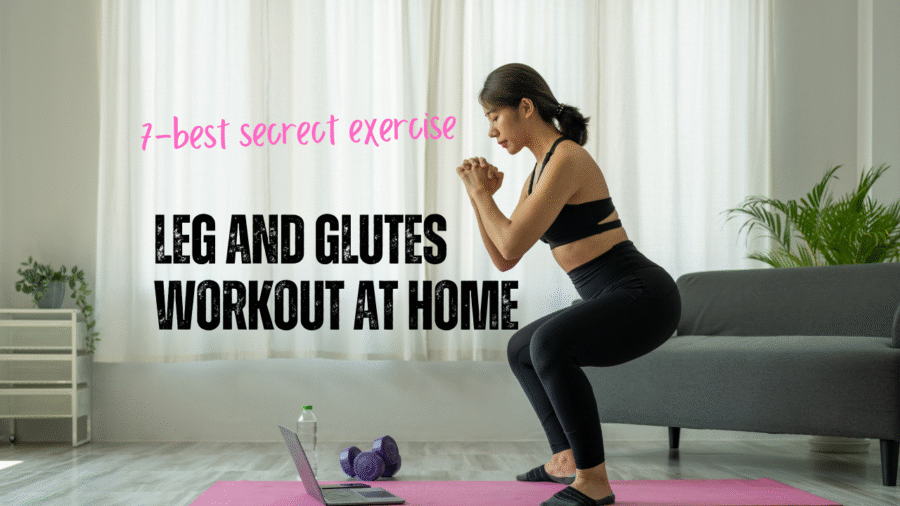

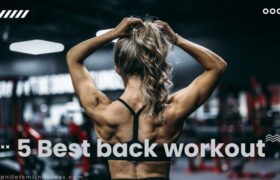
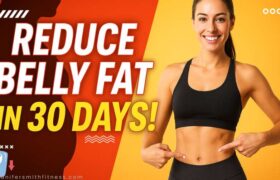

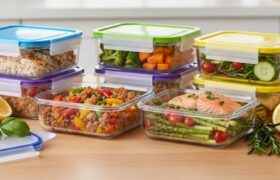
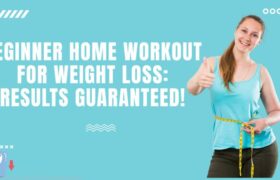
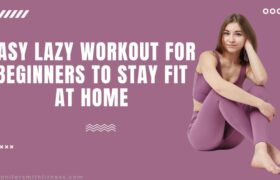


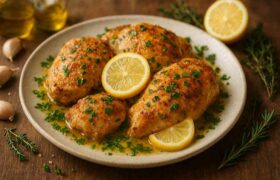
[…] your glutes workout journey is about to level up. These five booty exercises—RDLs, donkey kicks, hip thrusts, back […]
[…] more tips, check my posts on glute activation or home cardio workouts. Dive deeper with resources from Healthline or […]